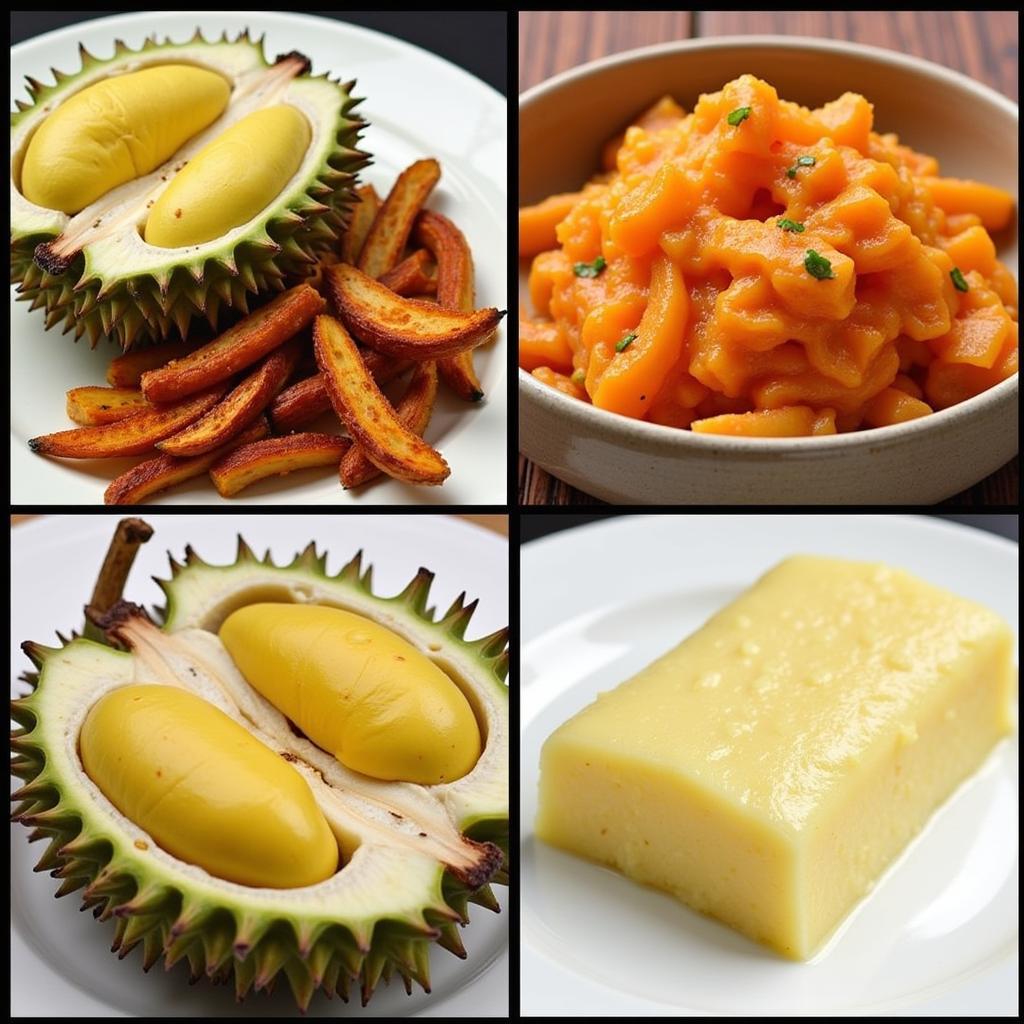Funky Foods. These aren’t your average grocery store finds. We’re talking about the unusual, the intriguing, the sometimes downright bizarre edible delights from around the globe. Whether it’s the pungent aroma of durian or the fermented goodness of kimchi, funky foods offer a unique culinary adventure for the adventurous palate.
What Makes a Food “Funky”?
Funky foods often possess distinct characteristics that set them apart from mainstream cuisine. It’s not just about the taste; it’s a combination of factors that contribute to their “funkiness.” This can include a powerful aroma, an unusual texture, a unique preparation process, or sometimes, all of the above! Think of the slimy texture of natto, the sharp, ammonia-like scent of stinky tofu, or the earthy, almost metallic taste of blood sausage. These qualities may not appeal to everyone, but for those who appreciate a culinary challenge, funky foods offer a rewarding experience.
One might argue that “funky” is a subjective term. What one person finds repulsive, another might consider a delicacy. This is part of the beauty of exploring funky foods; it’s a journey of discovery, pushing your culinary boundaries and expanding your palate.
Funky Foods from Around the Globe
From the bustling street markets of Southeast Asia to the traditional kitchens of Europe, funky foods are a testament to the diversity of culinary traditions worldwide. Let’s take a whirlwind tour of some of the most intriguing examples:
-
Durian: Dubbed the “king of fruits,” durian is notorious for its pungent smell, which has been compared to everything from gym socks to rotting onions. However, its creamy, custard-like texture and sweet, slightly savory flavor have earned it a devoted following.
-
Kimchi: This spicy, fermented cabbage dish is a staple of Korean cuisine. Its tangy, umami-rich flavor adds a delightful kick to any meal. Kimchi is also packed with probiotics, making it a healthy addition to your diet.
-
Natto: This Japanese breakfast food consists of fermented soybeans with a sticky, stringy texture and a strong, somewhat cheesy aroma. While it may take some getting used to, natto is incredibly nutritious and a great source of protein.
-
Hakarl: This Icelandic delicacy is fermented shark meat, often described as having an intense ammonia-rich flavor. Traditionally eaten as a small bite, hakarl is not for the faint of heart.
-
Casu Marzu: This sheep milk cheese from Sardinia is known for containing live insect larvae. The larvae contribute to the fermentation process and are said to enhance the flavor.
 A collage of images featuring funky foods from Asia and Europe, highlighting the diversity of culinary traditions.
A collage of images featuring funky foods from Asia and Europe, highlighting the diversity of culinary traditions.
Why Should You Try Funky Foods?
Stepping outside your culinary comfort zone can be incredibly rewarding. Trying funky foods:
- Expands your palate: It exposes you to new flavors and textures, broadening your appreciation for different culinary traditions.
- Offers a cultural experience: Food is an integral part of culture, and trying funky foods can be a window into the history and traditions of different societies.
- Can be surprisingly delicious: While some funky foods may seem intimidating at first, many offer unique and complex flavors that can be incredibly satisfying.
- Is a great conversation starter: Sharing your experiences with funky foods is a fun way to connect with others and swap stories.
“Funky foods aren’t just about the shock value,” says renowned food anthropologist, Dr. Anya Sharma. “They represent the ingenuity and adaptability of humans in utilizing available resources to create unique and flavorful dishes.”
Are Funky Foods Safe to Eat?
Most funky foods are perfectly safe to eat when prepared and consumed correctly. However, it’s always a good idea to do your research and understand the potential risks associated with certain foods, particularly fermented or aged products.
“Understanding the cultural context and traditional preparation methods is key to safely enjoying funky foods,” adds culinary historian, Professor Marco Rossi. “For instance, fugu (pufferfish) is a delicacy in Japan, but it requires highly skilled chefs to remove the toxic parts before consumption.”
Finding Funky Foods Near You
In an increasingly globalized world, finding funky foods is easier than ever. Check out local ethnic grocery stores, farmers markets, or specialty food shops. You might be surprised at what culinary treasures you uncover!
Conclusion
Funky foods offer a unique and exciting culinary adventure. They challenge our perceptions of what is considered “normal” and invite us to explore the diverse and fascinating world of food. So, next time you’re feeling adventurous, take a leap and try something funky! You might just discover your new favorite dish. What funky foods have you tried? Share your experiences in the comments below!
FAQ
- What are some examples of funky foods? Some examples include durian, kimchi, natto, hakarl, and casu marzu.
- Why are they called “funky” foods? They are called “funky” because of their unique and sometimes strong aromas, unusual textures, or unusual preparation processes.
- Are funky foods safe to eat? Most funky foods are safe when prepared correctly, but it’s essential to do your research.
- Where can I find funky foods? You can find them in ethnic grocery stores, farmers markets, or specialty food shops.
- Why should I try funky foods? They can expand your palate, offer a cultural experience, and be surprisingly delicious!
When you need assistance, please contact us at Phone Number: 02437655121, Email: minacones@gmail.com or visit our address: 3PGH+8R9, ĐT70A, thôn Trung, Bắc Từ Liêm, Hà Nội, Việt Nam. We have a 24/7 customer service team.